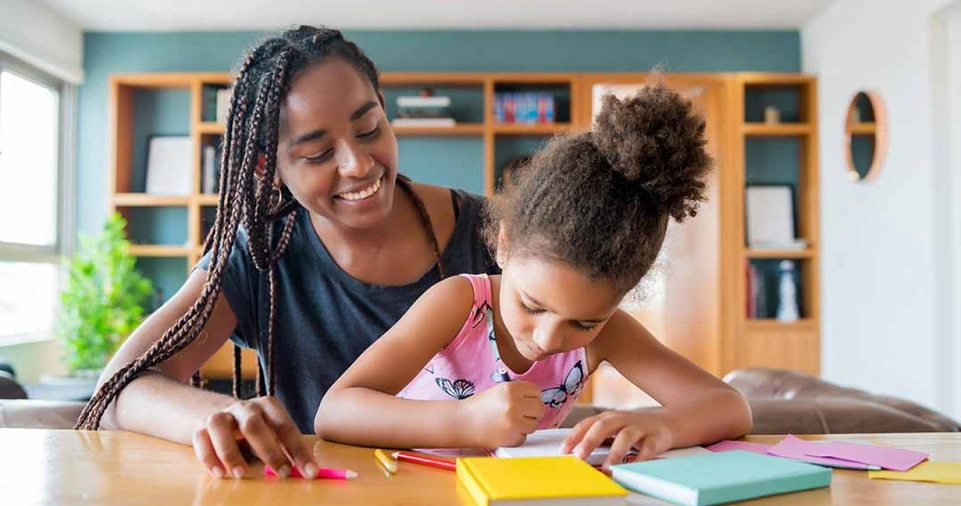Teach Kids About Responsibility is a crucial life skill that shapes their growth, decision-making, and independence.
From early childhood through adolescence, instilling a sense of responsibility helps children develop essential values like accountability, reliability, and self-discipline.
Teaching responsibility isn’t just about assigning chores—it’s about empowering kids to take ownership of their actions, manage their emotions, and contribute meaningfully to their surroundings.
Whether it’s through daily routines, schoolwork, or social interactions, kids learn responsibility in various ways.
This article offers actionable strategies, real-life examples, and age-appropriate tips to help parents, teachers, and caregivers foster a responsible mindset in children.
By applying these methods, you’re setting the stage for your child’s success in all areas of life.
Why Is Teaching Responsibility Important?
Responsibility empowers kids to:
- Make better decisions
- Follow through on commitments
- Build self-esteem
- Understand consequences
- Become trustworthy and dependable individuals
Children who learn to take responsibility early in life tend to grow into competent, resilient adults.
This developmental milestone also helps them become more empathetic, cooperative, and successful in school and beyond.
What Does Responsibility Look Like in Kids?
Responsibility in children manifests in several ways:
| Age Group | Examples of Responsible Behavior |
|---|---|
| Toddlers (2–4) | Putting toys away, following simple instructions |
| Early Childhood (5–7) | Getting dressed, helping set the table, completing small chores |
| Middle Childhood (8–11) | Doing homework independently, caring for pets, handling money |
| Pre-teens/Teens (12–18) | Managing schedules, part-time jobs, contributing to family decisions |
ALSO READ: How to Write Your First Blog Post: A Step-by-Step Guide for Beginners
Age-Appropriate Ways to Teach Responsibility

Start with Small Tasks Early
Even toddlers can begin learning responsibility through small, simple activities. Giving young children age-appropriate tasks makes them feel valued and builds a habit of participation.
Examples:
- Put dirty clothes in the laundry basket
- Help water plants
- Feed the pet with supervision
Use Chores to Build Discipline
Chores aren’t punishments—they’re tools for teaching life skills. Establishing regular responsibilities at home helps kids feel like contributing members of the household.
Tips:
- Assign specific tasks
- Create a chore chart
- Rotate duties weekly
Be a Role Model
Children mirror what they see. Model responsible behavior by keeping promises, showing up on time, and managing your own obligations effectively.
Key behaviors to model:
- Admitting mistakes
- Following rules
- Cleaning up after yourself
Strategies That Reinforce Responsibility
Set Clear Expectations
Kids thrive when they know what’s expected of them. Use clear, consistent language when assigning tasks or setting rules.
Do this:
- “Please make your bed every morning before breakfast.” Avoid this:
- “You should clean your room sometime.”
Follow Through with Consequences
Accountability teaches children that their actions have consequences—both good and bad.
Natural consequence example:
If your child forgets their lunch, let them face the discomfort of going without it (unless it’s an emergency). This builds memory and responsibility.
Logical consequence example:
If they don’t do their homework, they lose screen time until it’s complete.
Praise Effort, Not Just Results
Acknowledging effort reinforces the behavior you want to encourage.
Say this:
“I noticed how you remembered to feed the dog without being reminded—great job!”
Avoid this:
“Good boy.” (Too vague, not tied to specific behavior)
Teaching Responsibility Through Real-Life Scenarios
Use Allowance as a Teaching Tool
Giving a small, consistent allowance tied to specific chores can teach kids how to earn, save, and manage money responsibly.
| Age | Allowance Tips |
|---|---|
| 5–7 | Use jars labeled “Spend,” “Save,” and “Give” |
| 8–12 | Introduce a basic ledger or app to track spending |
| 13+ | Teach budgeting, saving for larger goals |
Let Kids Solve Their Own Problems
Helicopter parenting can hinder responsibility. Let children face age-appropriate challenges without stepping in right away.
Example:
If they forget their science project at home, resist the urge to bring it to school. Let them experience the consequence and plan better next time.
Teaching Responsibility in School Settings

Teachers can also foster responsibility in students through:
- Classroom jobs: Line leader, board cleaner, attendance helper
- Project-based learning: Assign long-term projects requiring planning
- Collaborative work: Encourage students to be accountable to their group
Incorporate Responsibility into Curriculum
Use storytelling, history, or literature to discuss characters who demonstrated (or lacked) responsibility and the outcomes of their actions.
ALSO READ: How to Choose a User-Friendly Laptop?
Emotional Responsibility: A Critical Component
Teaching emotional responsibility helps children understand how their feelings and actions affect others.
How to teach it:
- Practice empathy
- Encourage self-reflection
- Teach “I” statements: “I feel upset when…”
Activity idea:
Create a feelings chart. Ask your child to describe how they feel and what they can do to manage those feelings responsibly.
Social Responsibility: Building Good Citizens
Social responsibility involves teaching kids to care for others and their community.
Activities to promote social responsibility:
- Volunteer as a family
- Join neighborhood cleanups
- Encourage acts of kindness (helping a neighbor, sharing at school)
Incorporating Technology and Digital Responsibility
In today’s world, digital responsibility is crucial. Children must learn how to use technology wisely.
Teach Online Etiquette
Discuss the importance of respectful online behavior, privacy, and the permanence of digital footprints.
Topics to cover:
- Responsible screen time
- Avoiding cyberbullying
- Not sharing personal information online
Balancing Freedom and Responsibility
As kids mature, they crave independence. Use this desire to gradually increase their responsibilities.
| Freedom | Related Responsibility |
|---|---|
| Staying up later | Waking up on their own |
| Having a phone | Using it responsibly (no texting during class, etc.) |
| Going out with friends | Checking in on time, being honest about whereabouts |
Creating a Responsibility Routine
Establishing a consistent routine is one of the most effective ways to teach and reinforce responsibility.
Sample Daily Responsibility Schedule (Ages 6–10)
| Time | Activity | Responsibility |
|---|---|---|
| Morning | Get dressed, make bed | Personal care |
| After School | Homework, snack | Academic responsibility |
| Evening | Set table, tidy room | Household contribution |
Common Challenges & Solutions

| Challenge | Solution |
|---|---|
| Child avoids chores | Use visual chore charts, timers, or make it a game |
| Too many reminders needed | Let natural consequences take place |
| Lack of motivation | Provide reasonable rewards (e.g., extra playtime) |
| Child doesn’t take responsibility for mistakes | Model accountability and talk through the situation calmly |
Real-Life Example: Responsibility in Action
Case Study: The Morning Routine
Emma, age 9, constantly forgot her backpack and needed help each morning to get ready. Her parents used the following steps:
- Created a morning checklist (brush teeth, pack bag, eat breakfast)
- Gave Emma ownership—she had to check off each task
- Rewarded consistent responsibility with a “Friday Free Time” coupon
Outcome: Within three weeks, Emma independently managed her morning routine and felt proud of her accomplishment.
Tools and Resources to Support Responsibility
| Tool | Purpose |
|---|---|
| Chore Charts | Visual reinforcement of daily tasks |
| Apps like “OurHome” or “Cozi” | Digital chore and family schedule management |
| Responsibility Books | Storybooks like “What If Everybody Did That?” or “The Berenstain Bears and the Trouble with Chores” |
ALSO READ: How to Start a Home Decluttering Project: A Complete Guide for Beginners
Conclusion
Teaching kids about responsibility is an ongoing process, not a one-time lesson. With patience, consistency, and empathy, you can guide your children toward becoming confident, capable individuals who understand the value of their actions.
Whether through chores, schoolwork, social behavior, or digital life, every moment is an opportunity to reinforce the importance of responsibility.
Start small, lead by example, and create a positive environment where children are encouraged to take ownership of their tasks, emotions, and contributions. In doing so, you prepare them not just for success at home or school, but for life.







